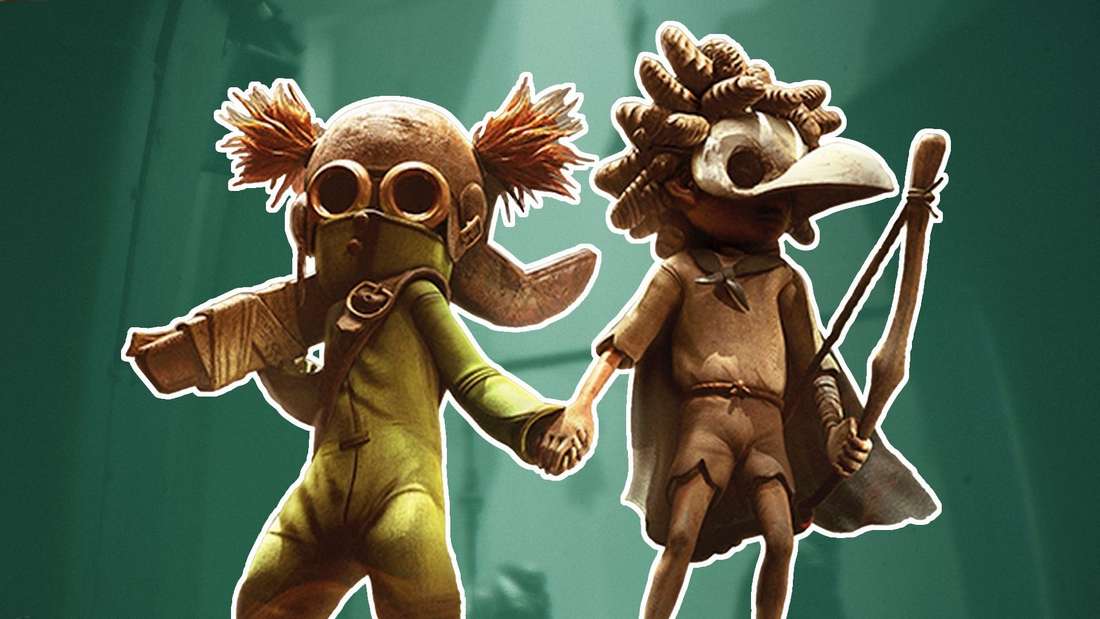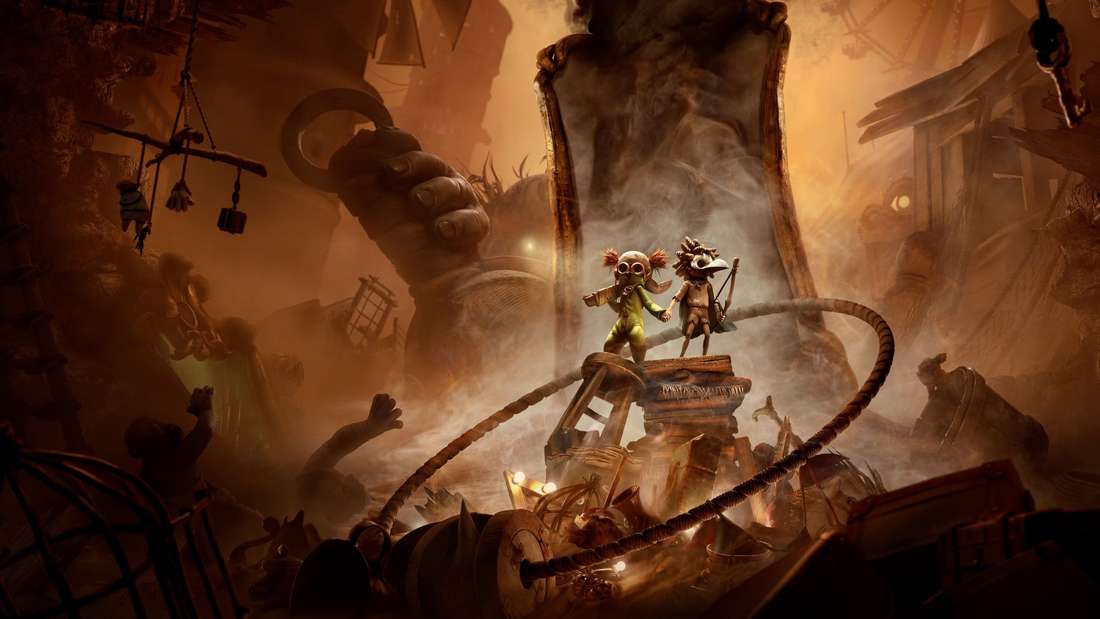Little Nightmares III Review: A Familiar Descent into The Spiral, Now for Two
Popular Now
 BeamNG.drive
BeamNG.drive
 Counter-Strike 2
Counter-Strike 2
 Roblox
Roblox
 The Legend of Zelda
The Legend of Zelda
 Genshin Impact
Genshin Impact
 Minecraft
Minecraft
 Fortnite
Fortnite
 Free Fire
Free Fire
 Warframe
Warframe
 Gacha Club
Gacha Club
 The highly anticipated sequel, Little Nightmares III, has arrived, inviting players to re-enter the grotesque, macabre world known as The Nowhere. Developed this time by Supermassive Games—known for their work on narrative horror titles—and published by Bandai Namco Entertainment, the game introduces two new protagonists, Low and Alone, and, most notably, the franchise’s first foray into online co-operative gameplay. While the game successfully captures the signature atmospheric horror and unsettling visual design the series is famous for, critical reception has been mixed, with many citing a sense of familiarity and inconsistent puzzle design.
The highly anticipated sequel, Little Nightmares III, has arrived, inviting players to re-enter the grotesque, macabre world known as The Nowhere. Developed this time by Supermassive Games—known for their work on narrative horror titles—and published by Bandai Namco Entertainment, the game introduces two new protagonists, Low and Alone, and, most notably, the franchise’s first foray into online co-operative gameplay. While the game successfully captures the signature atmospheric horror and unsettling visual design the series is famous for, critical reception has been mixed, with many citing a sense of familiarity and inconsistent puzzle design.
Released on October 10, 2025, across all major platforms, PC, PS5, PS4, Xbox Series X/S, Xbox One, and Nintendo Switch, the game’s primary draw is the dual-protagonist mechanic, which can be played with a friend via online co-op or solo with an AI companion. This shift to a shared nightmare is the most significant change in the series’ DNA, but its execution has been a focal point of debate.
 The Co-op Experience: A New Dynamic with Familiar Flaws
The Co-op Experience: A New Dynamic with Familiar Flaws
The addition of online co-op for the entire campaign is a bold move designed to refresh the puzzle-platformer formula. Low and Alone each possess a unique, story-essential tool: Low wields a bow and arrow for hitting distant targets and triggering mechanisms, while Alone carries a wrench for melee attacks and manipulating machinery. Puzzles are built around the necessity of their combined skills, which inherently emphasizes teamwork and communication.
- Online-Only Limitation: A major point of contention is the decision to implement online-only co-op, excluding local or couch co-op. This is a missed opportunity, especially given the game’s core horror appeal being ideal for a shared, living-room experience.
- AI Companion Performance: For solo players, the AI companion is generally competent, capably executing their part of the puzzles. However, reviewers have pointed out instances where the AI partner’s behavior became erratic during high-stakes stealth or chase sequences, leading to frustrating, instant-fail scenarios that interrupt the game’s crucial tension.
- The ‘Friend’s Pass’ Value: A commendable feature is the Friend’s Pass, which allows one owner of the game to invite a friend to play the entire adventure for free (on the same platform). This is an excellent Consumer-Friendly initiative that mitigates the risk for players unsure about the new co-op format, providing high perceived value to the initial purchase.
 Aesthetic and Atmosphere: Grotesque Beauty and Uneven Horror
Aesthetic and Atmosphere: Grotesque Beauty and Uneven Horror
Little Nightmares III maintains the series’ characteristic 2.5D perspective and cinematic horror atmosphere, delivering a visual and audio experience that remains largely incredible and immersive. The game takes Low and Alone through a new cluster of disturbing places known as The Spiral, including the sandy ruins of the Necropolis and the unsettling chaos of the Carnavale.
The monster design, a highlight of the previous games, is present, featuring creations like the massive, slack-eyed Monster Baby and the watchful Supervisor. However, some critics suggest that the new residents, while initially intimidating, lack the sheer visceral originality and lasting dread of villains like the Janitor or the Hunter from earlier installments. The initial chapters are described as “tepid” and “safe,” relying on familiar mechanics and set-pieces, before the game “blossoms” in its second half, delivering more imaginative and genuinely tense moments, particularly in the visually distinct Carnavale chapter.
Gameplay & Puzzles: Familiarity Breeds Frustration
The fundamental blend of stealth, platforming, and environmental puzzle-solving is preserved. However, the game has been criticized for relying too heavily on repetitive puzzle elements—such as block-pushing and lever-cranking—that feel less inventive than the intricate, context-driven puzzles of the original titles. Furthermore, recurring frustrations from the series persist:
- Depth Perception Issues: The signature distanced camera perspective, while cinematic, continues to make platforming and crucial jumps difficult, leading to deaths that often feel unfair rather than a result of poor timing.
- Overly Contextual Tool Use: The use of Low’s bow and Alone’s wrench is often highly context-sensitive, meaning players are rarely given the freedom for genuine experimentation or creative problem-solving. This keeps the solutions obvious, which detracts from the satisfaction of solving a complex puzzle.
Conclusion: A Competent Tribute That Plays It Safe
Little Nightmares III is a heartbreakingly competent addition to the franchise. Supermassive Games has successfully delivered a title that nails the mood, aesthetic, and core mechanics that fans expect. The cooperative feature, while limited to online play, introduces a welcome new dynamic that makes teamwork essential and adds a different flavor of fear—the dread of being separated.
However, the sense of overly safe sequel design, repetitive puzzle structure, and the return of frustrating legacy flaws prevents it from reaching the narrative and mechanical highs of its predecessors. For long-time fans and those looking for a new, atmospheric horror experience to share with a friend, Little Nightmares III is a worthwhile, though imperfect, entry. For newcomers, it remains a dark, visually stunning descent, but one that perhaps lacks the true, terrifying spark of its lineage.







